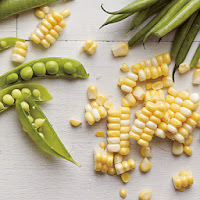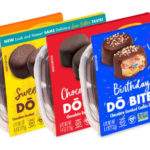Savor the bounty of fall veggies all year round without losing nutrients, with these tips on freezing veggies from our friends at Cooking Light!
1. Pick and Cut Your Produce
Freezing whole vegetables can harm their texture. This happens when ice crystals form, rupturing cell walls. The faster water freezes, the smaller the crystals it forms, so small or thin vegetables—peas, corn kernels, green beans—freeze best. Cutting larger vegetables into smaller, uniform shapes (about ½ inch or less) can speed the freezing process and minimize texture loss, as can freezing them in a single layer on a wide baking sheet or large plate.
2. Blanch the Vegetables
Before freezing, blanch the vegetables in boiling water. This helps maintain bright color and fresh flavor by deactivating enzymes that would cause them to turn drab during thawing. Plunge vegetables into boiling salted water for a few moments.
3. Spread Vegetables Into a Single Layer
Spread the blanched veggies on a rimmed baking sheet, and place in the freezer until frozen.
 4. Transfer to Freezer Bags
4. Transfer to Freezer Bags
Once frozen, transfer to zip-top freezer bags with the air pressed out before sealing. Even freezer bags allow some transfer of gases, which can lead to freezer burn, so for storage longer than two months, it’s best to double-bag. Make sure to label the bags with the packing date.
Bonus for following all these steps: Small, blanched frozen veggies thaw in just a few moments under warm running water directly in their bags.
The Creative Kitchen™, LLC, teaches children about food and how to cook in a fun, safe, and educational manner. Targeting families with children ages two to teen, the company focuses on teaching, writing creative content and curriculum, special events, recipe development, spokesperson work, webisode production and consulting to present educational and entertaining content through food-related activities. The founder, Cricket Azima, is an expert in cooking for and with children. She inspires kids to express themselves creatively through food and cooking, while complementing lessons with traditional educational material such as social studies, math, arts, science, and more. Visit www.thecreativekitchen.com for more information.













